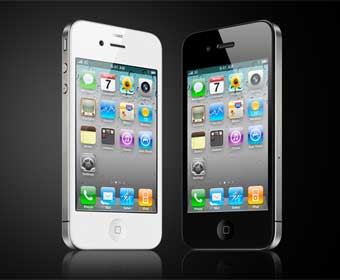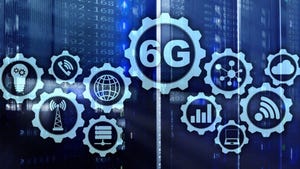A CDMA iPhone would be great for Verizon, but does it make sense for Apple?
If Apple decided to make a CDMA iPhone, the whoops of jubilation would be heard all the way from Verizon Wireless’headquarters in Basking Ridge, NJ, to AT&T’s HQ in Dallas, TX, where the news would no doubt be greeted with stunned silence. Latest reports cite unnamed sources as confirming that Verizon Wireless will offer the iPhone in January, when they say AT&T’s exclusive deal with Apple ends.
July 1, 2010

By Paul Lambert
If Apple decided to make a CDMA iPhone, the whoops of jubilation would be heard all the way from Verizon Wireless’headquarters in Basking Ridge, NJ, to AT&T’s HQ in Dallas, TX, where the news would no doubt be greeted with stunned silence. Latest reports cite unnamed sources as confirming that Verizon Wireless will offer the iPhone in January, when they say AT&T’s exclusive deal with Apple ends.
Put simply, a CDMA iPhone would be the best thing that could happen to Verizon Wireless. The operator has suffered through not being able to offer the iPhone, especially among its most valuable subscribers who have either left to join AT&T or grumbled at not being able to own the most sought-after consumer electronics device around.
At the same time, AT&T has benefitted in so many ways from being the sole supplier of the iPhone, evidenced not least in its strong churn figures. Despite not having the best network, AT&T has the lowest customer churn among US operators, at 1.30% at end-March, according to Informa Telecoms & Media.
So, Verizon Wireless would be able to stem the flow of high-end subscribers to AT&T and it could gradually get back the ones it’s already lost by being able to offer the iPhone.
And what would Apple gain from offering a CDMA iPhone?
Manufacturing a 3G CDMA iPhone would not only allow Verizon’s 92.8 million subscriptions to buy the device without changing network operator: globally, there are around 120 CDMA operators, with 466 million CDMA subscriptions between them. This means that subscribers to these CDMA operators would be able to buy the iPhone without changing operator.
But the picture isn’t as simple as that. The global market for a CDMA iPhone is not as healthy as the top-line figures suggest. The majority of CDMA operators are in emerging markets where demand for the iPhone is already being met by the WCDMA version.
How many CDMA subscribers in say, Venezuela, aren’t buying an iPhone just because it’s not CDMA? I’d say, very few: the vast majority of global CDMA subscribers just don’t want, or can’t afford, an iPhone. Verizon Wireless is in a unique position in the US, because the perception that its network is much better than rivals doesn’t arise in other markets, where network quality is less differentiated from operator to operator.
And on top of this, many of the top ten CDMA operators, which between them account for 77.5% of total CDMA subscriptions, are looking at next generation network futures that don’t include CDMA.
CDMA iPhone complexities
Commentators who write about the supposedly imminent CDMA iPhone, and Verizon customers who will it into existence, overlook the complexities involved for Apple in manufacturing a CDMA iPhone.
Apple would essentially need to redesign the current iPhone to incorporate CDMA technology. It would need a separate new team to do this. A CDMA iPhone would require dedicated supply and production lines. Apple would need to strike a completely new set of agreements for CDMA intellectual property, and with a new set of rights holders. It would also require new solutions to enable certain iPhone features, such as Visual Voicemail.
The bottom line is that a CDMA iPhone would have a higher bill of materials than the WCDMA version, meaning that CDMA iPhone margins would be much lower. And unlike with the WCDMA version, margins wouldn’t significantly improve down the line because CDMA operators, especially in developed markets, are turning their backs on the technology in favour of LTE, or in some cases, WiMAX.
The approach required to launch a CDMA iPhone would go against Apple’s phenomenally successful strategy of producing high-margin, high volume products that differentiate on design, software, usability and the unique application of existing technology.
Some forecasters have estimated that a CDMA iPhone would bring in an extra US$7 billion in revenues for Apple, based in part on Verizon signing up eight-nine million iPhone subscribers a year. This forecast rests on the assumption that there are eight-nine million potential Verizon iPhone customers not churning to AT&T because of allegiance to Verizon. That seems like a very high number to me.
I think that the only way Apple would produce a CDMA iPhone would be if Verizon invested heavily in the manufacture of it, assuming much of the financial responsibility for developing and setting up production of it. This could make sense for Apple because it would be able to leverage Verizon’s help to roll the CDMA iPhone out in other markets. Although I argue that pent-up demand for a CDMA iPhone outside the US is small, globally, a CDMA iPhone could provide a boost to global iPhone sales.
But this potential upside doesn’t take into account the potential downsides for Apple. A CDMA iPhone would massively increase Apple’s exposure to potential product failings and shortcomings. Even for the high volume WCDMA iPhone these have been more frequent than Apple would like, although as yet they have done nothing to blunt consumer appetite for it.
Perhaps a CDMA iPhone isn’t in the cards, and the iPhone Verizon is rumored to begin selling in January is the LTE version. This makes sense, but not in the near term. It’s highly unlikely Apple would make an LTE iPhone until LTE networks are mass-market and other handset manufacturers have ironed-out the inevitable problems the technology will have. Remember, Apple didn’t launch a 3G version of the iPhone until mid-2008, long after the first 3G networks were launched. Apple will surely wait for others to make the first expensive mistakes with LTE.
All this means that Verizon could have to wait until 2012-2013 to offer an LTE version of the iPhone.
But Apple is used to breaking new ground, including its own, and is perfectly capable of making a CDMA iPhone if it considers that it makes enough business sense to do so. The CDMA iPhone depends on Verizon’s ability to persuade Apple to do just that – break new ground and enter into an extremely close partnership that goes far beyond being just a buyer of Apple products.
If Verizon fails to do this, and convince Apple it will be a better close partner than accident prone AT&T, it will have to continue suffering when the latter’s iPhone exclusivity ends, and more US operators start selling the device – but still not it.
Read more about:
DiscussionYou May Also Like









_1.jpg?width=300&auto=webp&quality=80&disable=upscale)


.png?width=800&auto=webp&quality=80&disable=upscale)